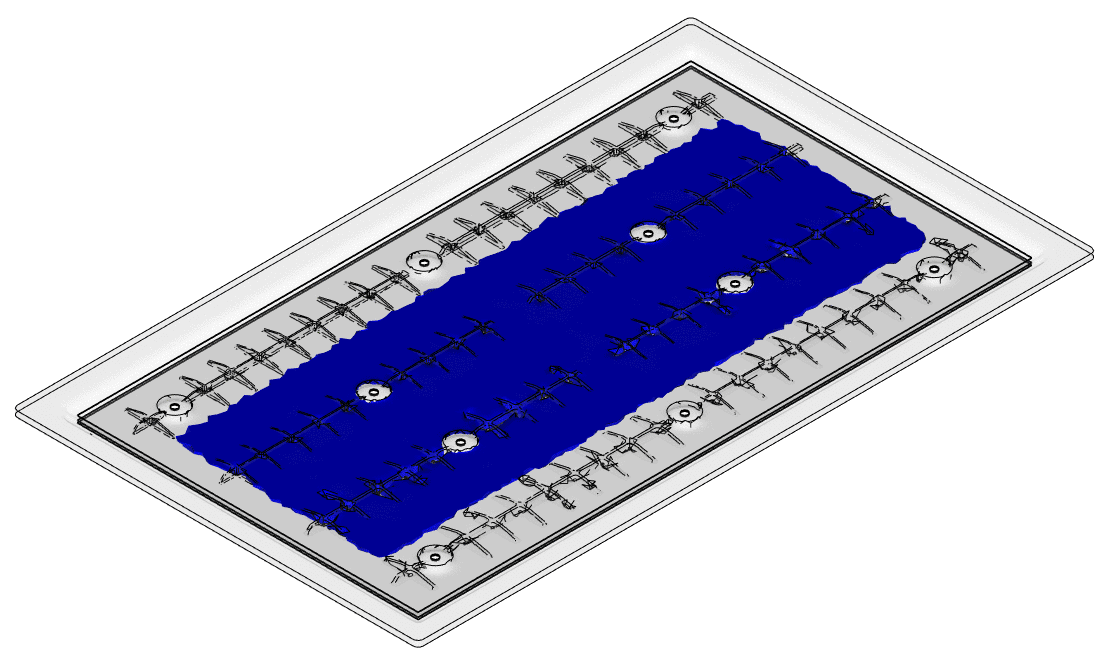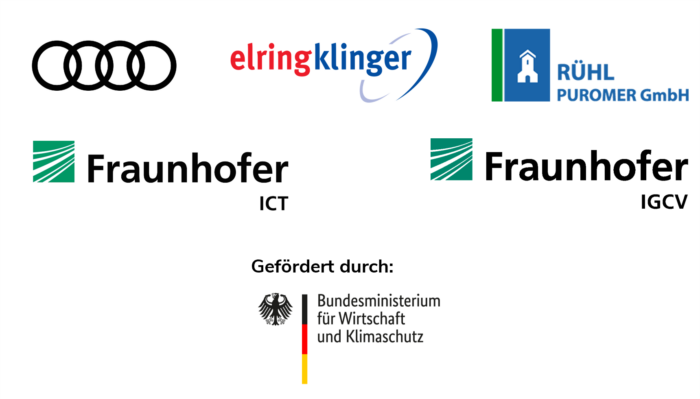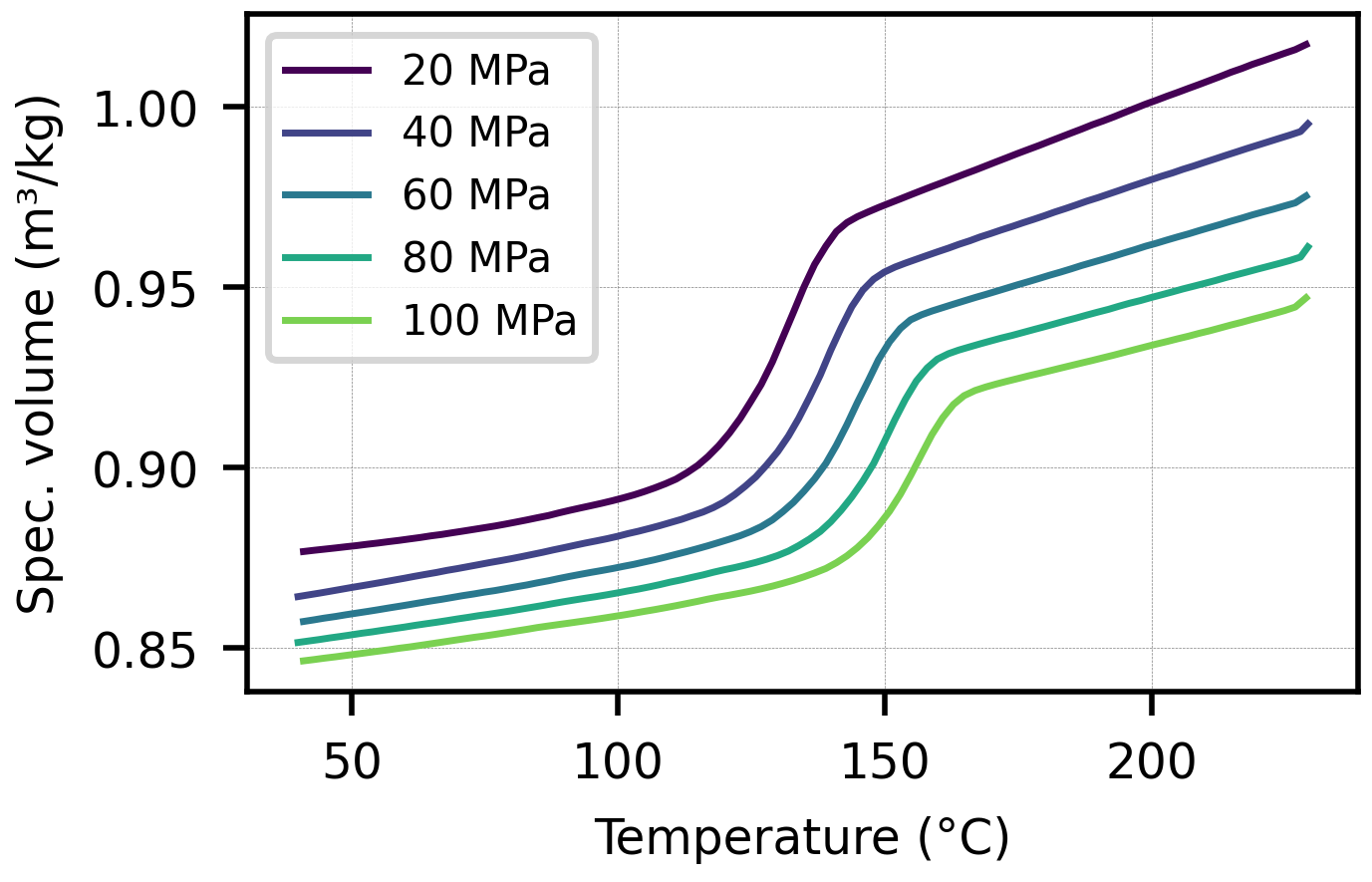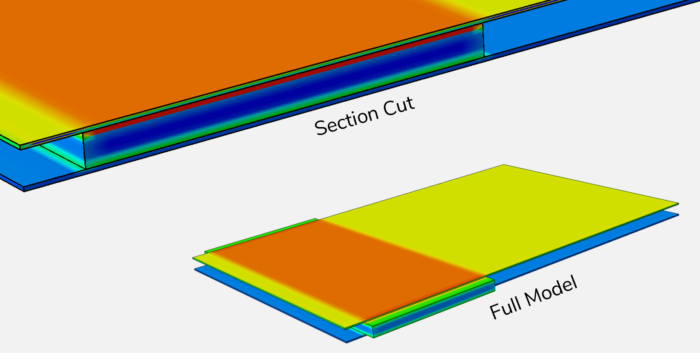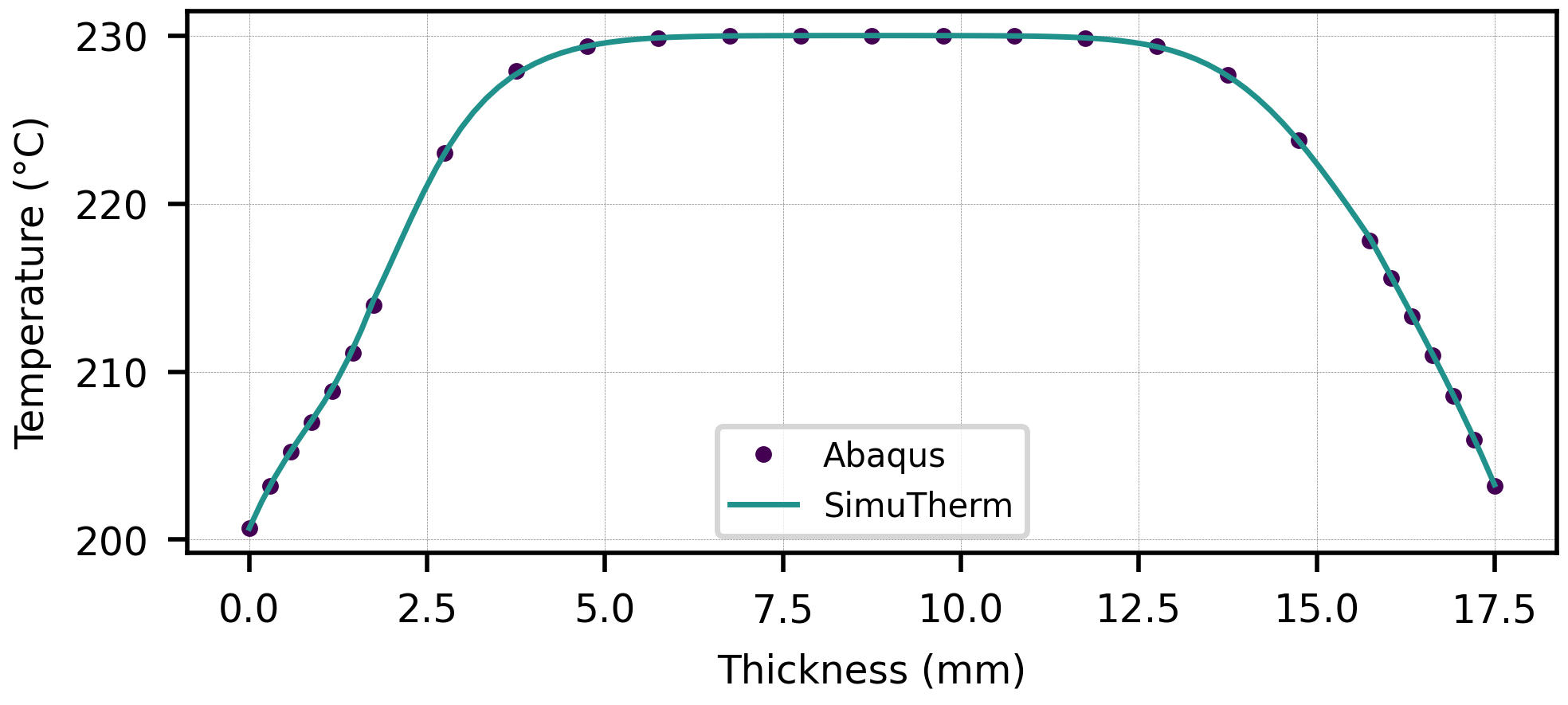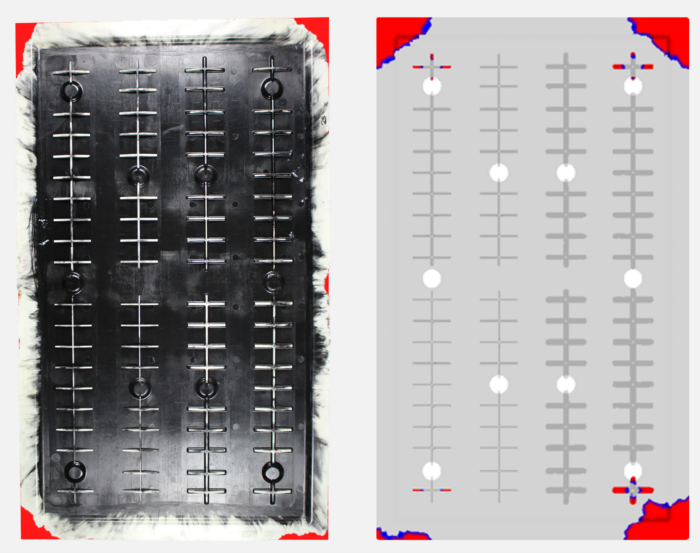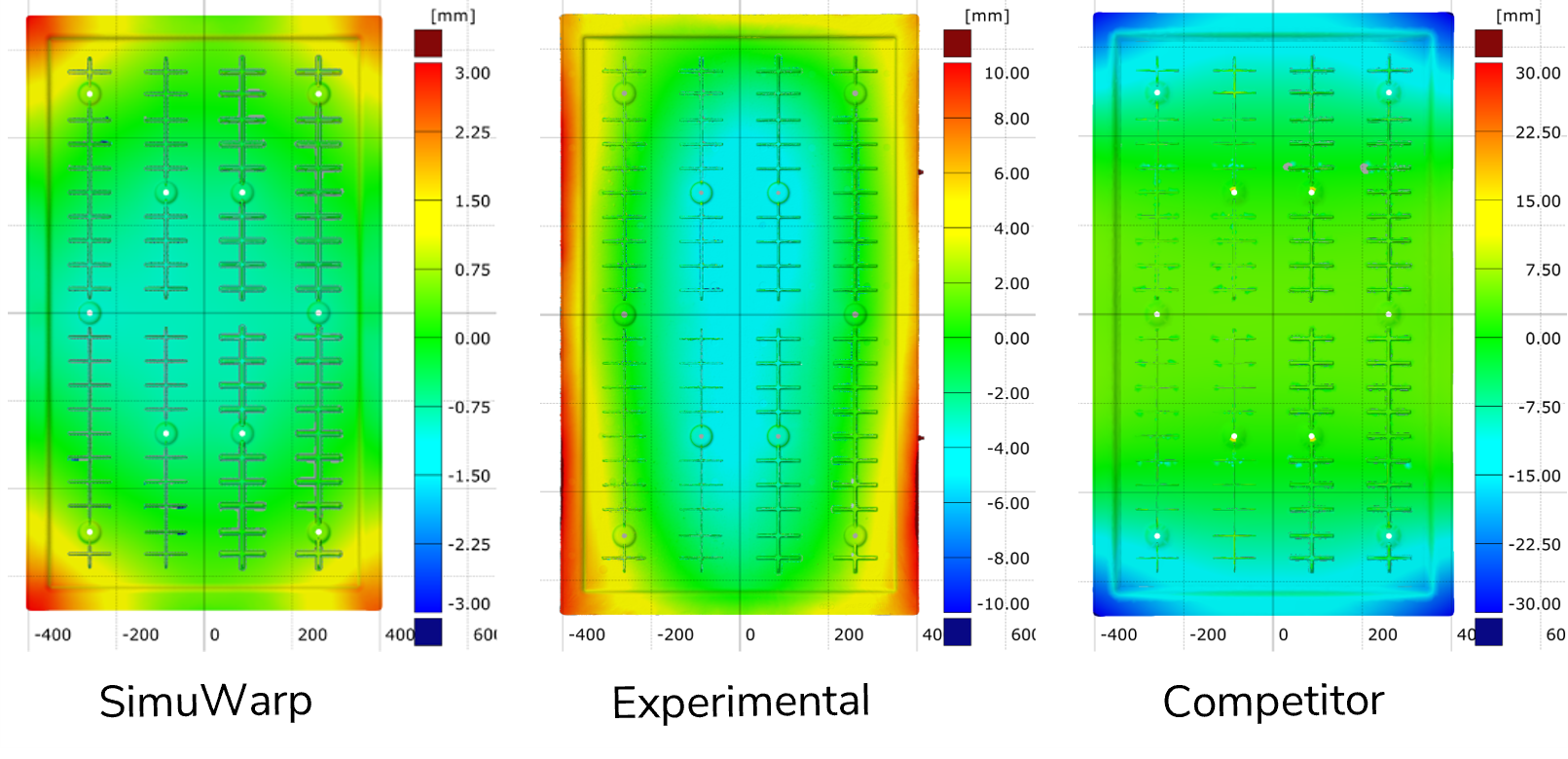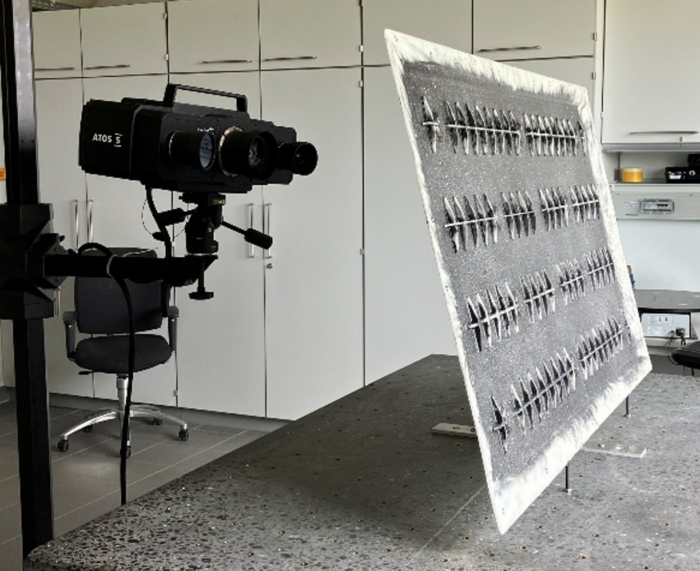Motivation
Underbody structures in battery electric vehicles (BEV) protect batteries against damage from below. Impact events, in particular, represent special challenges, as a significant energy amount must be absorbed within minimal deformation tolerances. LFT-tape-sandwiches, such as those used by AUDI, are highly suitable for these tasks. In the public-funded project protECOlight (“Sustainable and weight-optimized protective structures in the underbody area for vehicles with new drive technology”), the manufacturability of such components was investigated in-depth with the partners AUDI, ElringKlinger, and Fraunhofer ICT.
Within protECOlight, a significantly ribbed geometry was developed, which is strongly related to the underbody geometry of an AUDI Q8 e-tron. This geometry was then investigated in a large process campaign to better understand the mechanisms of rib filling on top of the LFT-tape-sandwich and through the tape. Besides this, methods were developed to predict mold-filling, which serves as the basis for the virtual design and optimization of the process. The resulting virtual process chain considers the relevant stages of the process, such as cooling of the tape and LFT during handling, compression molding (filling and packing), and warpage. A forming simulation can optionally extend this virtual process chain to identify likely local tape damage, which enables the rib filling through the tape.

